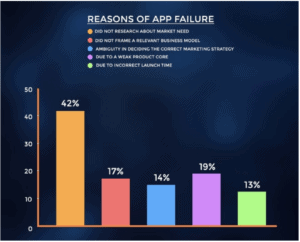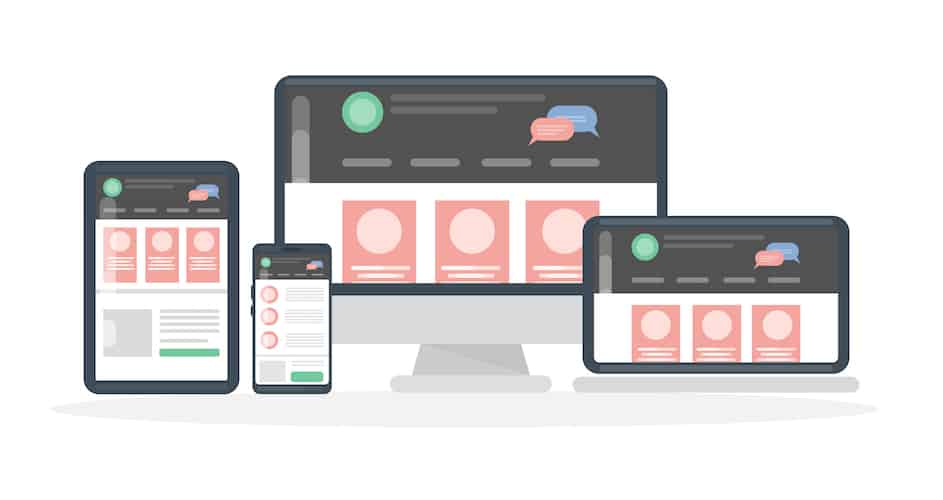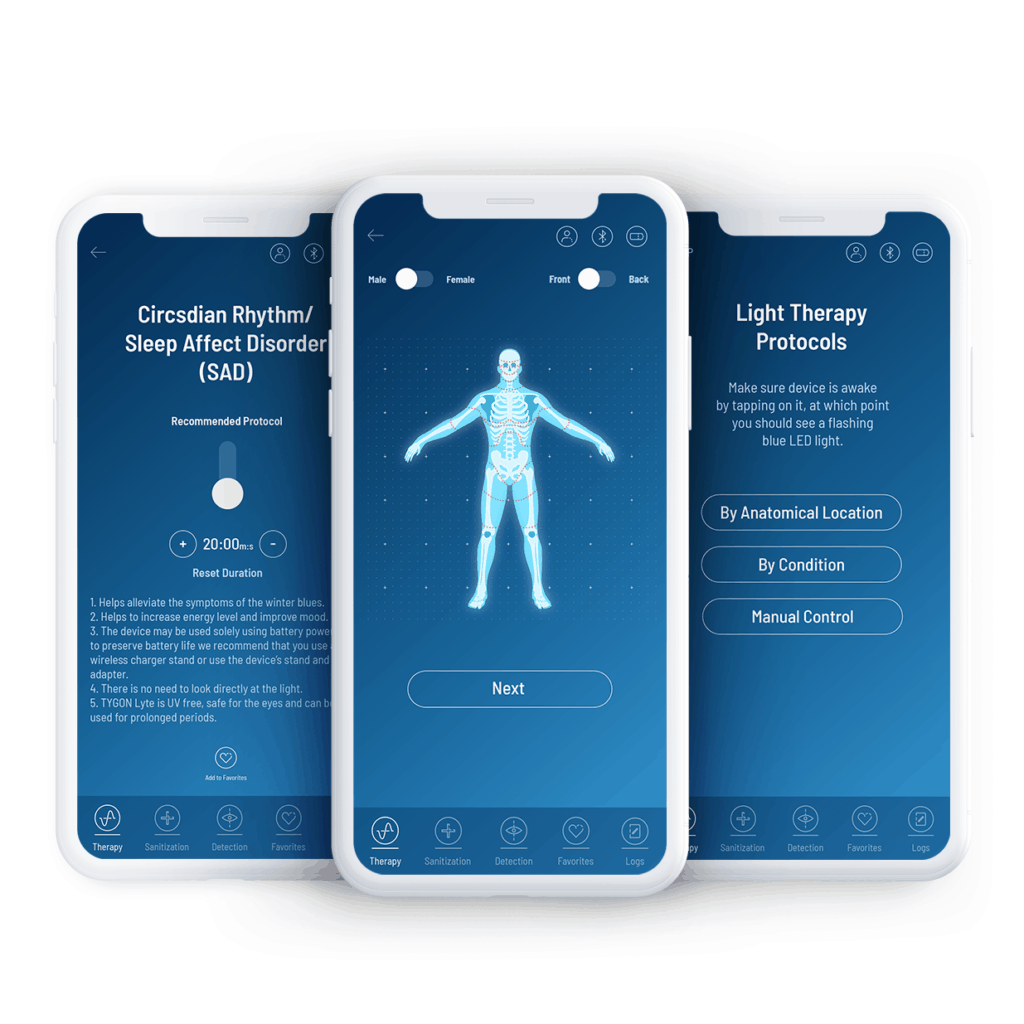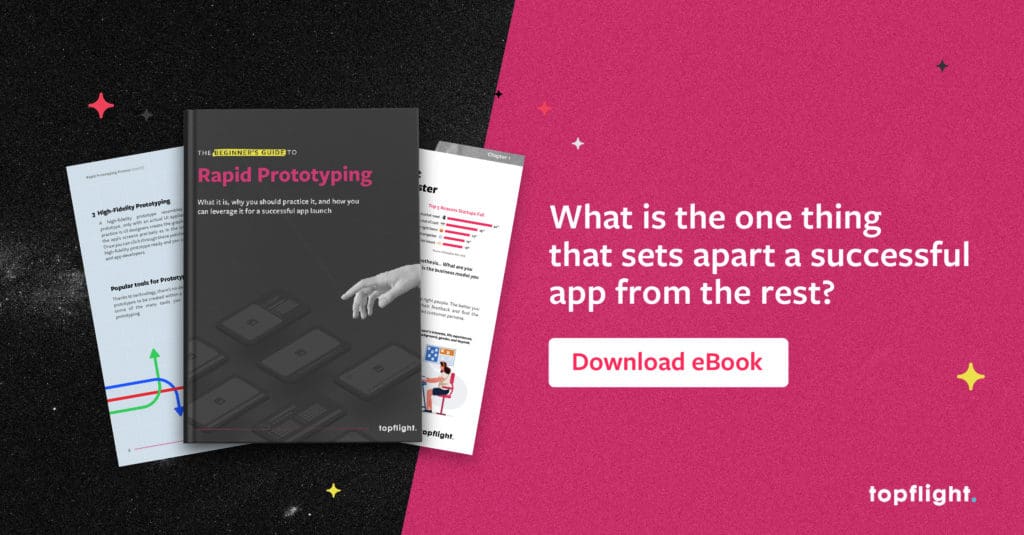342 hours, 47 minutes and 9 seconds.
You wish we had an answer that precise. Unfortunately, that’s not the case. But what we do have is a guide to help you approximate how long it will take you to build a mobile app.
How long it takes to develop an app varies based on several factors. It depends on where in the planning stage you might be, the kind of app you need developed, and how amazing your app design and development team support is. The average time it takes to build an app is anywhere between 4-6 months, but let’s further understand the different factors that impact how long it takes to develop an app.
Let’s break these factors down into 2 main categories
The planning stage
- You have a basic idea of what is needed in the app, but not a defined scope
- You have a defined scope laying out exactly what is needed
- You have finished UI/UX designs
External factors
Let’s dive into each one to answer “How long does it take to develop an app?” We recommend keeping a calculator handy.
Quick Breakdown: How Long Does It Take to Develop an App?
The time to develop a mobile app depends on several factors, including the app’s complexity, design requirements, and chosen platform. Below is a quick breakdown of the estimated timelines for different stages of app development.
| Development Stage | Estimated Time | Description |
|---|---|---|
| Planning & Discovery | 2 – 4 weeks | Aligning business goals with app requirements and user needs. |
| UI/UX Design | 4 – 6 weeks | Creating wireframes, mockups, and prototypes for the app. |
| Development (Single Platform) | 3 – 5 months | Building the app for either iOS or Android. |
| Development (Cross-Platform) | 4 – 6 months | Developing the app for multiple platforms simultaneously. |
| Testing & QA | 3 – 5 weeks | Ensuring the app is bug-free and meets performance standards. |
| Launch & Deployment | 1 – 2 weeks | Submitting the app to app stores and monitoring the initial release. |
| Total Development Time | 4 – 9 months | Depends on complexity and platform choice. |
The average time to develop an app for Android and iOS in 2024 ranges from 4 to 9 months, depending on the app’s complexity and target platform. A cross-platform app typically requires a longer timeline due to the additional testing and optimization needed for multiple systems.
You Have a Basic Idea of What’s Needed in the App
Before custom developing an app, it’s important to ensure it fits with your business goals. If you have an idea that you’ve thought about but need some help developing it further and aligning it with your business goals, this is where you’re at.
If you’ve already figured out that, say, you want to build an iPhone app with XYZ features, you can jump to the next step (the one with a ready design).
Defining the Target Audience
Defining the target audience is a crucial step in app development as it sets the direction for the entire project. You must thoroughly understand your potential users to build an iOS app that caters to their needs. Start by identifying their:
- demographic traits
- tech savviness
- cultural preferences
- pain points
The better you explore factors like age, gender, location, interests, and behavioral patterns, the better will be the user experience of the software you’re building. Based on the findings, you can create user personas or profiles that embody your typical users, including their goals and challenges.
This detailed understanding will help you tailor your app’s features, design, and functionality, ultimately reducing mobile app development time by focusing on what matters most to your target audience. That’s definitely how you can develop an application while spending less time.
Market Research and Competitor Analysis
After defining your target audience, the next crucial step is conducting comprehensive market research and competitor analysis. Market research helps you gain insights into the broader industry landscape, identify market trends, and assess the demand for your app idea. It involves studying the needs, preferences, and behaviors of your target audience, as well as understanding market dynamics and potential challenges.
Simultaneously, competitor analysis allows you to understand what other apps in your niche are offering and how they are catering to the target audience. Explore their features, design choices, user experience, and pricing strategies. By studying your competitors, you can identify gaps, opportunities, and areas where you can differentiate your app, especially if it’s a complex app with lots of features.
For example, when working on a wealth management mobile app for a leading financial services firm, we had to thoroughly investigate all their competitors on the local market to come up with a compelling app vision.
Combining market research with competitor analysis empowers you to make informed decisions throughout the app development process. It helps you refine your app’s unique value proposition, enhance its features, and position it strategically in the market. By leveraging this knowledge, you can optimize development time by avoiding pitfalls, capitalizing on successful strategies, and delivering a superior app experience to your target audience.
Time projections
Market research (including target audience and competitive analysis) is usually called a discovery stage and takes anywhere between 25-65 hours, depending on the size of your project. This stage would involve understanding various features you need in the app as well as how you’d like for it to come together.
This also involves extensive competition research, studying API and code libraries to analyze feasibility of software development, deciding between iOS and Android, native and PWA. This stage is used to ensure your app idea is in line with your business goals to achieve optimal ROI.
That’s why the question “How many hours to develop an app?” is not a trivial one.
You Have a Defined Idea, but Not a UI/UX Design
Now that you have a defined scope and functionalities, the next step is designing the app.
So the obvious thing to do is design the UX and UI and then move to development.
Right?
Not really.
This is when rapid prototyping comes in. Imagine spending hours and hours on designing and developing your mobile app only to find out that it’s not the best fit for users. In fact, two thirds of all the apps developed fail to hit 1000 downloads and almost 24% of users abandon apps after the first visit due to a lack of user testing.
Moreover, it’s 10x cheaper to fix a design flaw while prototyping than during development. That’s why you need to build an app prototype first. The prototype is a rough UX design draft with the basic foundation but allows the design team to iterate based on what’s working and what’s not.

Image credit: Business of Apps
The UX design, rapid prototyping and user interface design on average take around 50-100 hours. This includes a user journey and wireframes, therefore the time involved depends on the complexity of the app.
Remember that it will take way more hours to create an app if you skip the rapid prototyping step and instead start to design an app. This principle equally applies to simple apps and complex apps.
You Have a Finished UI/UX Design
This is when you’re ready to jump directly into the development stage to code an app. There are four main elements that will affect the delivery timeline as you develop an Android app:
- The actual development
- QA testing (including beta testing)
- Project Management
- Deploying your app
The actual development involves project setup, the front end, back end (with the server-side logic), server side development (with data storage), additional API integrations. The length of time from start to deployment averages around 450 – 700 hours for a typical application. Let’s look at the various factors involved that go into estimating the effort involved.
Cross platform vs iOS/Android
It takes around 2X the time time to make an app for iOS and Android (in effect, you develop two separate apps) while 1.5X the time to develop a cross platform app. While the upfront time and cost for a cross platform app is higher, we recommend it with React Native as it is the most optimal if you’re planning on being present on both Android and iOS.
React Native will absolutely work for the majority of apps, unless you’re building a game or a graphically intense app. However, there are alternative cross-platform technologies, too. For example Flutter is a viable option if you want to develop a mobile app that works on both mobile platforms.
As you realize, developing two separate apps using native tools like Swift and Kotlin will take longer.
Related: Swift vs React Native for iOS
Progressive web apps (PWAs) vs native
Not to start another holy war, but PWAs vs Native is definitely an important consideration when building your mobile app. It wouldn’t be fair to say one is better over the other, because both have their own use cases, but in terms of time and effort, PWAs take the cake because of the relative ease of development.
However, it may not always be the best option especially if you’re looking for specific functionalities in iOS. This decision is usually taken at the discovery stage but in the end impacts development time and is therefore worth mentioning here.
Still, if PWA is a go, the average time to develop an app using the corresponding technologies is at least 1.5x faster compared to native app development.

Third party integrations
Third-party integrations include GoogleFit, WooCommerce, Typeform, Mailchimp, Calendly, Twilio, social media plugins, etc. The average integration takes about 30-40 hours. This varies for the type of integration but the number should give you a ballpark time effort based on the number of data integrations needed.
Please note that if, for example, you want to develop an iPhone app integrated with Twilio, that not only increases the development time by 40 hours, but also affects project management and QA timing.
Additional specifics
These could be things like
- HIPAA Compliance or Encryptions
- Machine Learning
- Payment Processing
- Recurring Subscriptions
The average time for each of these is hard to average because, let’s say, integration of an app with Stripe for payment processing may take around 40 hours and developing an ML algorithm for a chatbot to cater to patients with mental issues may require up to 100 hours alone. No wonder it takes more time to build an app with AI capabilities.
App testing and quality assurance
Once the actual development is over, comes one of the most important elements of the process – QA testing. On an average, QA testing takes up around 30% of the time of the actual app development. For example, if the actual app development took around 300 hours, QA would take up around 30% of that, which is an additional 90 hours, bringing the total upto 390 hours.
In order to speed up the development process, you need to carefully consider automated testing. Automated tests help identify problems early on and avoid releasing a malfunctioning version of an app that then needs quick fixes.
In the long run, automated QA causes fewer hours to make an app. However, don’t rush automated testing from the very start as it will require a lot of time to set up.
Project management
Project management takes on average 15% of the total time that goes into development and QA. That would be an additional 15% of the 390 hours to build an app, bringing the total effort involved up to 449 hours. Project Management is one of the most important aspects of developing a mobile app. From keeping tabs on the project progress, to ensuring the team has everything necessary to proceed at pace to taking and passing on feedback from clients, project management can turn around the mobile app development timeline.
Once you’re ready to launch an app, the next and final step is to deploy it from the development environment to the actual live hosting which can take an average of 25 hours in the case of a web app, and around 8 hours for the App Store or Google Play Store.
External Factors Once Development Begins
In an ideal world, the amount of time it takes to build an app is dependent solely on the elements we discussed above. However, that’s not always the case. Some external factors may indirectly affect how long app development takes as well.
Project team
We can’t stress enough on how important and impactful this one is. It is important for the project team to not just understand what’s needed from the app in terms of development but how the app will ultimately impact the business as a whole. It’s never only about a team’s ability to program an app.
Something to look out for in your team is the ability to understand the capital and time to market constraints and accordingly propose solutions that do not compromise quality. In a best case scenario, the team should be able to understand the goal behind the app and recommend a strategy whether it is a PWA or a cross platform app in the best interest of the business.
Additionally, the resources available to work on a particular project greatly influence the time it takes to develop the app. For example, let’s say the estimated hours for development are 449. Can the development team double up on resources and work full time on the app to go live in half the time? How about putting three or more app developers on the same app to get it ready even faster? A team with decent experience will be able to tell you if that’s the case from the get-go and whether more developers would mean faster turnaround for your project.
Stakeholder management
In some cases stakeholder management can be time consuming because the app is being built in collaboration with more than one party. Facilitating regular meetings, providing regular updates to different stakeholders, getting different feedback from those involved can be overwhelming and time consuming.
It’s important to account for this when creating project timelines as well as create a process to optimally streamline stakeholder management. Frequent communications with key stakeholders should help you make a mobile app faster.
Risk management
Unpredictable situations like new iOS releases, mid project changes, third party integration changes may impact project timelines. Ensure the project plan is concrete to avoid situations that you can control such as mid project changes. For the external factors that may not be in your control like iOS and third party updates, keep some buffer time, especially if the project is a long one (over 6 months).
Time management and deadlines
At Topflight, we respect and practice the Agile development approach. This methodology excludes giving strict deadlines, although we still have to stick to a certain cadence of releasing new functionality. The team plans what features will be realized within the next two weeks and hustles towards delivery.
If you take a look at our Vision-to-Traction System, which has guaranteed successful and timely delivery of multiple products, you’ll notice that each activity has a specific time frame associated with it. However, these time frames aren’t rigid, as we update them based on unique project needs.
Budget management
Effective budget management is essential when it comes to app development for Android and iOS. As you plan your project timeline, it’s crucial to allocate resources wisely and keep a close eye on your budget. Start by determining the scope of your app and setting a realistic budget that covers development, design, testing, and ongoing maintenance. Consider factors like hiring developers, purchasing software licenses, and potential marketing expenses.
Regularly monitor and track your expenses throughout the development process to ensure you stay within budget. Prioritize features based on their importance and impact, focusing on essential functionalities first. Consider agile development methodologies that allow for flexibility and cost control.
By effectively managing your budget, you can avoid financial strain, maintain project momentum, and deliver a high-quality app within your desired timeline.
Updates and maintenance
Ok, you already know that any successful application keeps evolving over time. Not only because you need to add new exciting features to keep users engaged, but also because new iOS and Android tend to update at least once a year or two. Plus, you need to make sure any external libraries are using the latest secure versions of the source code. Finally, you’ll have to deal with pesky bugs from time to time: optimizations and fixes are the core of app maintenance.
It’s true that such updates and maintenance do not necessarily prolong the app development process because they come into play once the app has been released. However, you need to carefully pick external libraries and integrate a monitoring solution in advance to expedite any future releases.
User feedback and improvements
Besides planned updates carrying new features, you’ll also have to spend time reacting to user feedback. Based on our experience with Walker Tracker and a few other mobile apps, it’s vital to catch all negative reviews and channel them off the App Store and Google Play. Based on customer feedback, we might need to:
- fix UI/UX issues
- introduce new features
- add contextual help or update a tutorial
To do that, you’ll need to integrate a mobile analytics solution like Mixpanel. Once complete, we can show customers a dialog asking to rate the app, and if the rating is low we capture their input and add to the product’s backlog. And all 4-star-and-above reviews go straight to the app stores.
Now that we’ve gone over some of the factors that influence how long it will take to develop your app, let’s walk you through how we helped develop Tygon Lyte, a light therapy IoT app, for a sense of the different factors that go into a project as well as timelines involved.
Tygon and Topflight Apps
When Dr Shaul Yehezkel approached us, he and his team had been working on a device called TYGON Lyte for 2 years and needed to build a cross-platform app for iOS and Android. This was a patented hardware device that was designed to treat conditions like inflammation, traumatic injuries, acne as well as UVC sanitizing, black light detection and more. The app was to act as a “remote control” for the medical device.
What stage was Dr Shaul in?
Dr Shaul knew what he wanted from his app but had not yet developed the UI/UX designs. That’s when we stepped in. That takes us directly into stage 2 “You have a defined idea, but no UI/UX designs.”
Also Read: Agile App Development Guide
Step 1 – Designing the UX UI (Effort = 70-80 hours)
This involved not only creating a modern, user-friendly UI/UX using simple wireframes but also prioritizing what functionalities to highlight. Since the device did multiple things, based on our experience we hypothesized that light therapy was going to be the core value proposition based on which we designed the UI/UX to match the branding of the hardware. Therefore other than UI/UX design, this phase involved us using our experience to guide the client to decide the core value proposition.
 Step 2 – Development (Effort = 380 hours)
Step 2 – Development (Effort = 380 hours)
This involved collaborating with the in house development team to create a mobile app for iOS and Android that’s cross-platform and stays in sync with the firmware product roadmap that the internal team was working on. We used Firebase, our preferred scaffolding tool for non HIPAA user management and React Native. The product roadmap was broken down into smaller chunks to not just speed up time to market but also understand user behavior to make data driven decisions about next steps in development.
Here’s what the timelines for this MVP (minimum viable product) looked like:
- Design (UI/UX, Prototype) = 80 hours
- Development = 380 hours
- QA = 114 (30% of development)
- Project Management = 74 hours (15% of Development + QA)
The total project ran around 650 hours. That’s one possible answer to “How much time to create an app?”
We continue to work on Tygon today and are going to be launching Phase 2 of the product. When working with a transformative product like Tygon it is important that the app development company is constantly innovating and contributing not just from a development standpoint but also a business and growth standpoint.
Hopefully you have a better idea of what to expect when developing an app both in terms of process and timelines. It’s important to remember that the more concrete the idea and goals behind the app are before beginning development, the higher are the chances of a successful and timely delivery.
On average, developing an app from the planning to launch stage takes 4-6 months, but this greatly varies on all the above factors (perhaps you only need to make an Android app?). It is also helpful to have a partner that provides ongoing maintenance and support as apps are always a work in progress, whether that’s upgrades, feature improvements, app store changes or something else. If you’re looking to build an app and aren’t quite sure what the next steps are, or want to get an approximation on how long it will take to make the app, get in touch for a free consultation.
[This blog was originally posted in July 2020 and most recently updated in June, 2023]
Related Articles:
- Custom Mobile App Development Guide
- App Development Costs: Budgeting for your App
- A Guide to Agile App Development
- Getting the most our of hourly app development contracts
